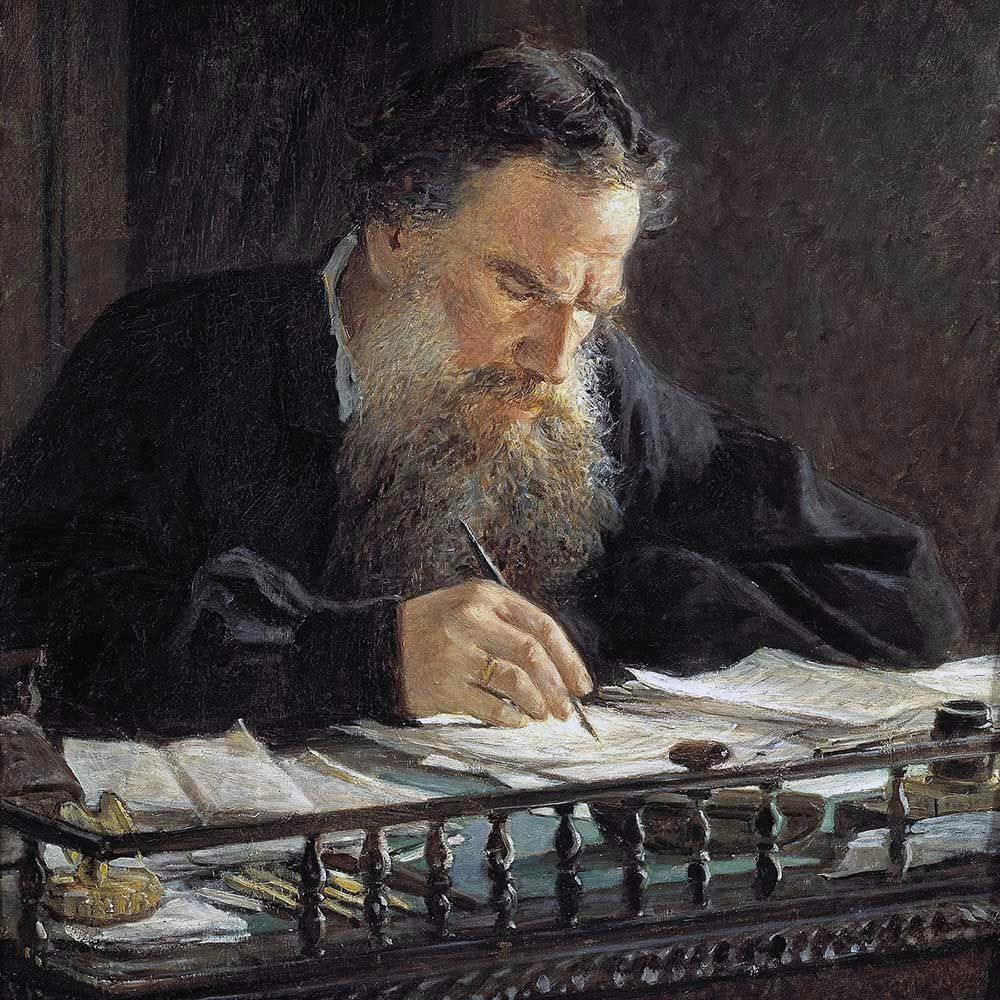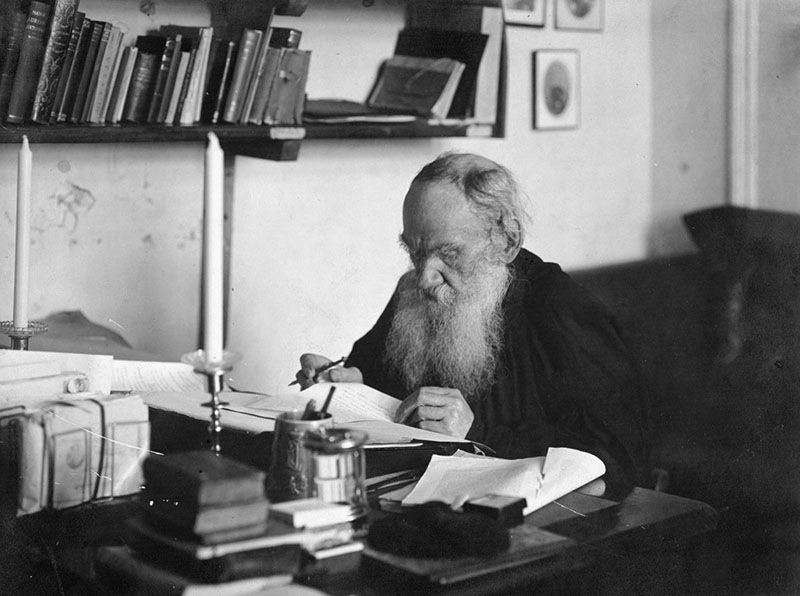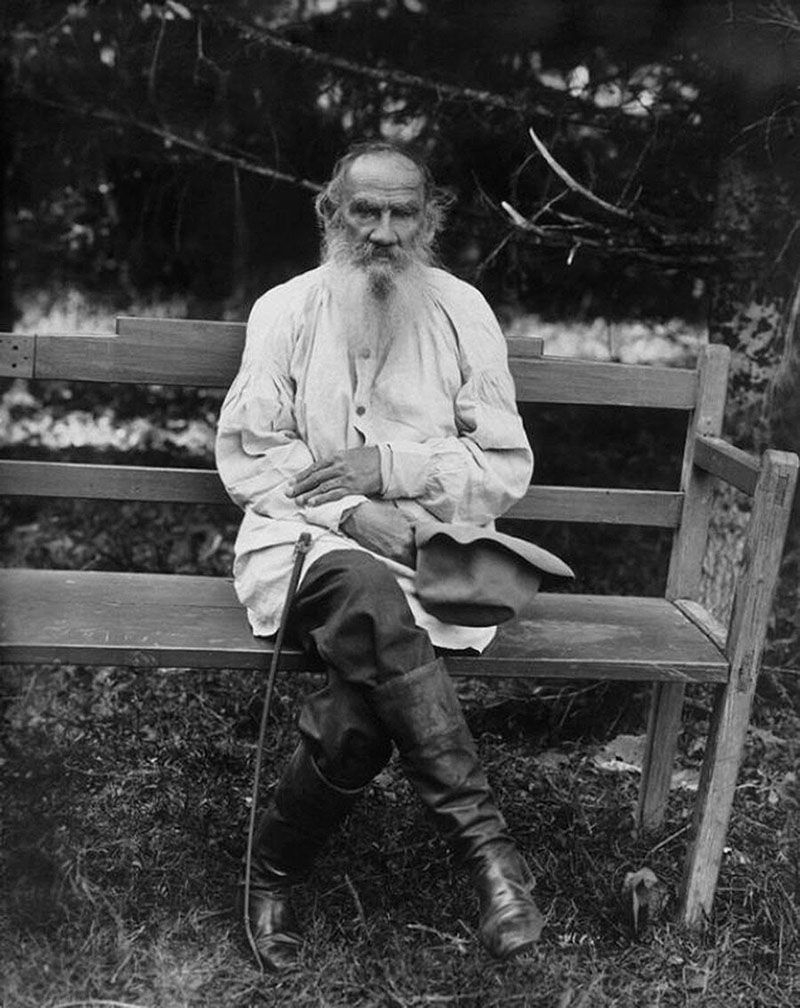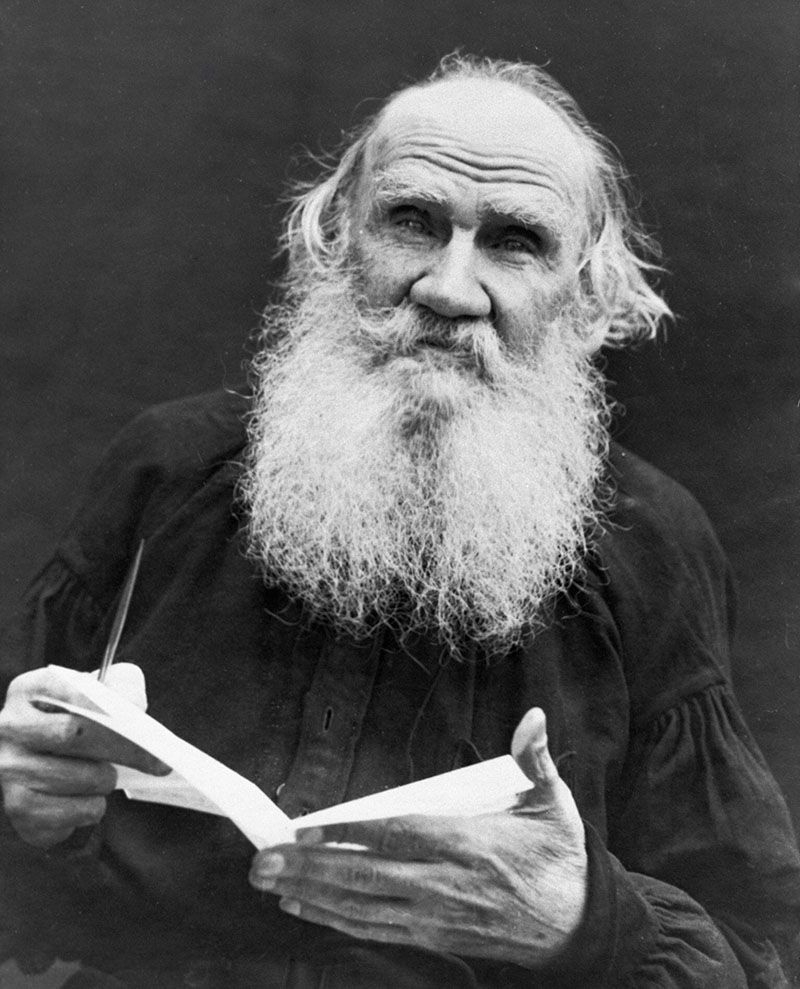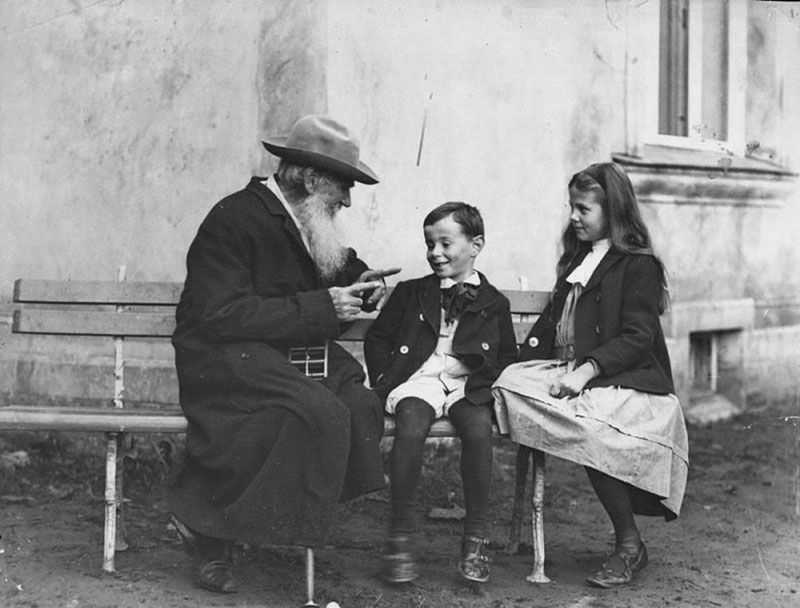The ninety volumes that make up Leo Tolstoy’s total ouvre speak for themselves. He liked to keep himself busy. But on top of his impressive scope of published work, he indulged in plenty of hobbies, including ploughing, teaching at his own school, composing, studying languages and even crafting his own boots. All of this might make you wonder: how did he find the time?
The lack of such modern distractions as Instagram feeds or a Netflix series will have helped. However, there is much to learn from his daily routine and habits when it comes to dealing with burning deadlines and keeping your spirits up, even in today’s digital age. After all, what we do share with this 19th century Russian author is the number of hours in a day.
1/ Journaling
Thirteen volumes out of Tolstoy’s expansive bibliography are dedicated solely to journals and notebooks, which he started keeping as an eighteen-year-old youth. One particular date – 25 March 1851 – has a special place in this series of works as a day which the writer decided to capture in writing in full. Three weeks and 26 typographic pages later (an equivalent of 400 regular book pages), Tolstoy abandons the idea as no ink or printers could do it justice.
However, Tolstoy did not give up on the habit of committing thoughts, events and worries to paper, which was something he continued to do for the next 59 years. Not only did journaling give him material for his future masterpieces, it also provided a forum for introspection.
We could all do with some of that to help us prioritise, keep our eyes on the prize and avoid a burnout. And especially so when we are in the midst of burning deadlines. The legendary author was convinced that in order to get to know yourself, it is important to make note of what you remember and what you forget. There is no easier and more accessible tool for doing so than through keeping a regular journaling practice.
2/ A productive morning
Tolstoy believed that the most important tasks are best left for the most productive time of day. This golden rule of time management has been known long before the emergence of today’s insights into productivity. The science of circadian rhythms, which is based on the fluctuation of hormonal levels in our bodies, confirms that the human brain works at its best capacity after breakfast and roughly before 3-4 o’clock in the afternoon.
Leo Tolstoy might have been unfamiliar with the concepts of time management or the idea of our internal rhythms but his gut feeling led him to believe that working in the morning is the most effective. Indeed, this is the routine he stood by for his entire creative career.
The gut feeling of Leo Tolstoy led him to believe that working in the morning is the most effective.
He would leave all other less important tasks such as reading his letters, going for walks or dealing with house chores to the afternoon. And he was not a fan of his morning routine being disrupted by unplanned visits or unforeseen circumstances.
Allusions to his morning practice of writing permeate his diaries and are typically a sign of a day well spent. No wonder he left so much written legacy behind. We could all do with testing it out for ourselves.
3/ Regular movement
Those that have ever seen a portrait of Leo Tolstoy will likely picture a bearded face truncated by a map of wrinkles. It is difficult to imagine this person as an active young man full of energy. The truth is, Leo maintained a great level of fitness throughout his life.
Daily stretches, long walks and sports were an inseparable part of his routine. With a rucksack over his back and a stick in hand, Tolstoy could easily walk a distance of roughly 200 km from Moscow to his estate in Yasnaya Polyana in his late sixties.
Leo Tolstoy maintained a great level of fitness throughout his life.
He learnt to cycle at the age of 67, a moment vividly recorded in his journals: “Evgeny Ivanovich was trying to dissuade me and was saddened to see me ride with no regrets. If anything, I feel that I do not care what others think and it simply brings me innocent childish joy.” Riding for thirty kilometres along country lanes is not a trip for the faint hearted!
At an old age some of the writer’s favourite activities included swimming, horse riding and even tennis, which he played with his entire family at a local court. Leo confesses that it was during such moments of active rest that he found the energy to continue his mental pursuits. Something to consider next time we look to wrap up a testing week with a takeaway and a rom com.
4/ Clear goals
“To achieve something great, we need to channel all of our strength towards this one goal,” – were the words of a person responsible for at least several masterpieces of classical literature. We should probably take note. Tolstoy may have been unfamiliar with the SMART method of goal setting that is so popular today. However, nothing stood in his way when it came to planning big for the days, months, years and the whole life ahead of him.
Most of this did relate to his plans as a writer but the journals also touch upon some of the more mundane things such as wanting to get up earlier or smoking less. Despite the fact that on many such occasions, Leo violated his own commitment the very next day, his sense of purpose is one to be envied. No matter how many times he revokes himself for deviating from his routine or lacking willpower, he did complete all of his major works, achieved most of his intentions and even gave up smoking, eventually.
Anyone looking to be more productive could do with remembering one simple life hack, which Tolstoy set out for himself aged only 18: “Have a goal in life, a goal for any known period of your life, a goal for the next year, month, week, day or even the next hour to the minute, sacrificing less important goals for the greater ones.”
5/ Self-development as a way of life
“Despite everything that I have gained since I started to work on myself, I am still not fully satisfied. The more you progress in developing yourself, the more you notice your own shortcomings,” were the lines in Tolstoy’s very first journal. It is everything one would expect from an eighteen-year-old but this thought recurs in his notes almost half a century later: “I am eighty two years old but I still have so much work to do on myself.”
The writer’s desire to expand his horizons, move forwards and look deeper led him to leave university in his second year and read a million books. Being a self-taught polyglot, he started learning Dutch aged 73, making it a fifteenth language in his skill set.
It seems that the true secret of productivity sits in this tireless curiosity about life, rather than in any kind of unique time management techniques.
